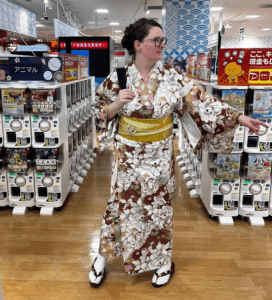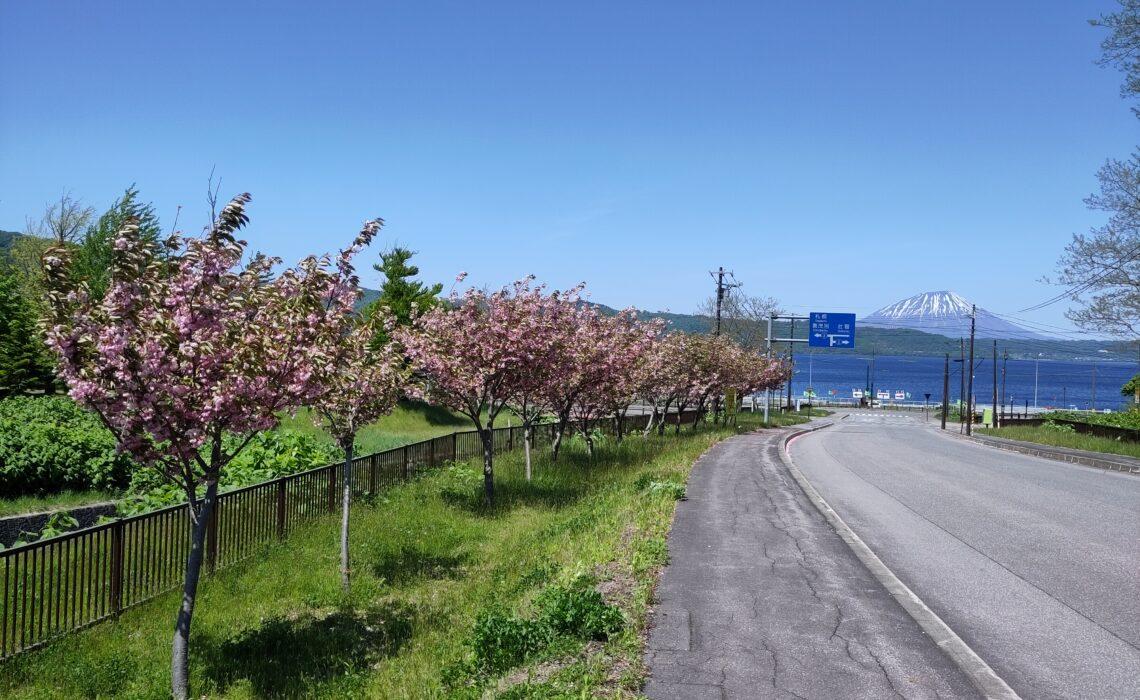
After our last stop in Sendai, we rode the train to Hakodate, a big harbor city that often serves as an entry point to the northernmost main island of Japan. This is the farthest the Shinkansen goes on Hokkaido (there should be a connection up to Sapporo in 2030). This is also the first place we stayed during our 4 days on Hokkaido.
Hi there! I’m a French-speaking writer and blogger and most of my content is in French. Please leave a comment to let me know if you enjoy my articles in English and would like me to continue translating my original posts!
Day 1 and a half
Hakodate
We arrived in Hakodate after a 3-hour ride with the Shinkansen, from Sendai, and a short additional ride with the JR train. By the time we reached the hotel and settled, it was already 6 PM.
Hakodate is surrounded by the ocean. From our hotel room, we can see it to the right and the left. This also means the city can be quite foggy, which was the case when we arrived.
We visited the Red Brick District to grab something to eat, but unfortunately, not many places were still open. We ate at the Beer Hall because it was the only place serving food, and it was not great (they serve European inspired food, and it was so-so).
The day after, our first full day on Hokkaido, we headed for the famous fish and seafood market for breakfast, and treated ourselves with otoro (fat tuna) and grilled scallops. It felt a bit touristy, food was ok and prices seemed higher than elsewhere. There was also less choice than we expected.
We saved the day (well, the morning) with some delicious watermelon and strawberries at another shop.
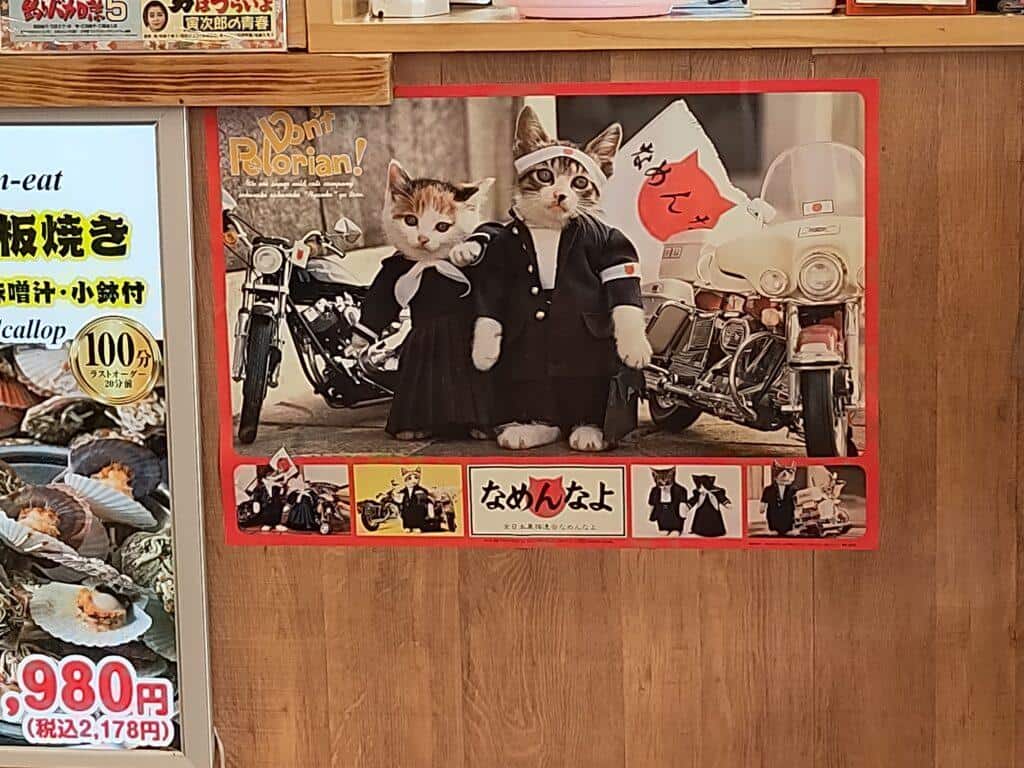
Noboribetsu
After breakfast, we took the train to Noboribetsu. It took around 2 hours to get there. Our destination: Jigokudani, the Hell Valley. From Noboribetsu station, we bought some bus tickets and dropped our bags in a coin locker. After a ten-minute bus ride, we bought some lunch at a konbini and walked to Jigokudani.
Jigokudani is famous for its steaming sulfur plains. You can walk along a wooden path that winds its way through the sulfur fields. I found the place less impressive than what I had expected, and the tour was over quickly (part of the park is not always open, depending on the current level of activity).
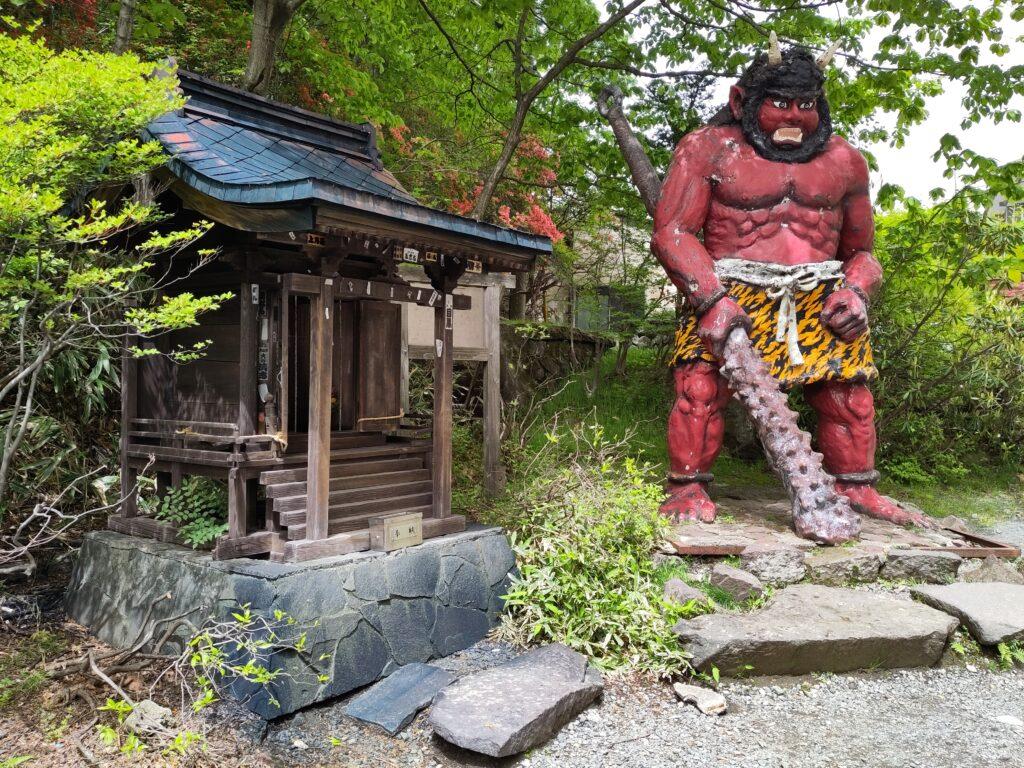
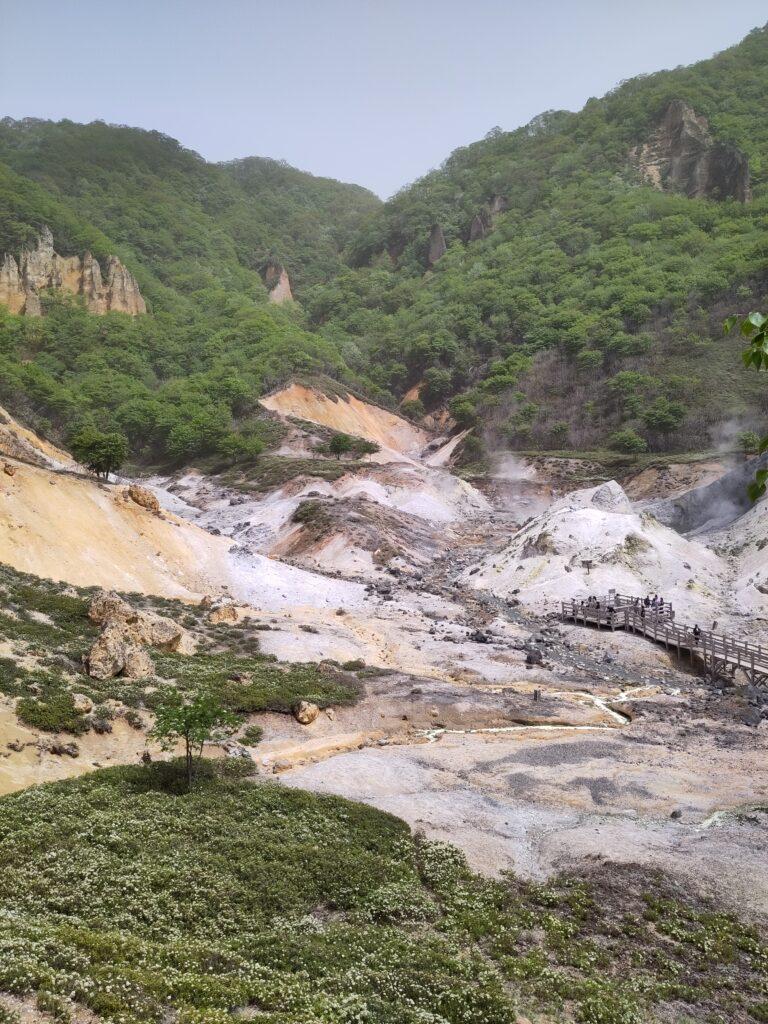
After this, we continued into a wood, to the natural foot bath Oyunuma, naturally heated and rich in sulfur. There were a few people on that spot, but there was still plenty of room for us and it was quiet enough to enjoy the foot bath. We’d walked many kilometers already at that point of our one-month trip, so it felt amazing for our feet!

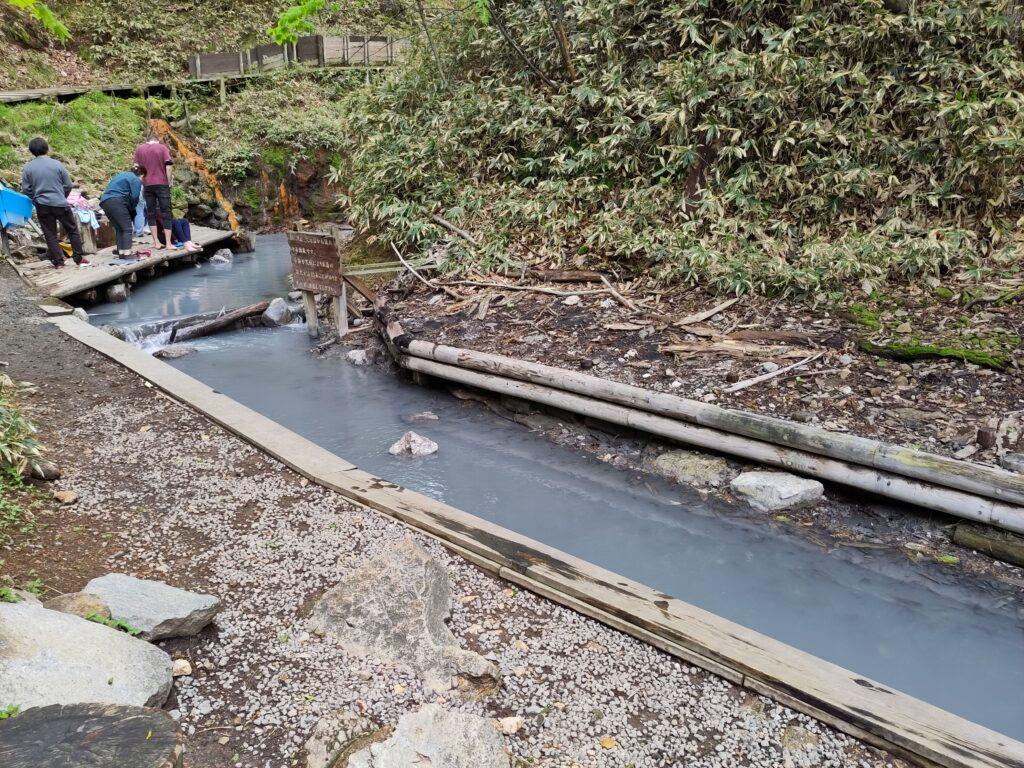
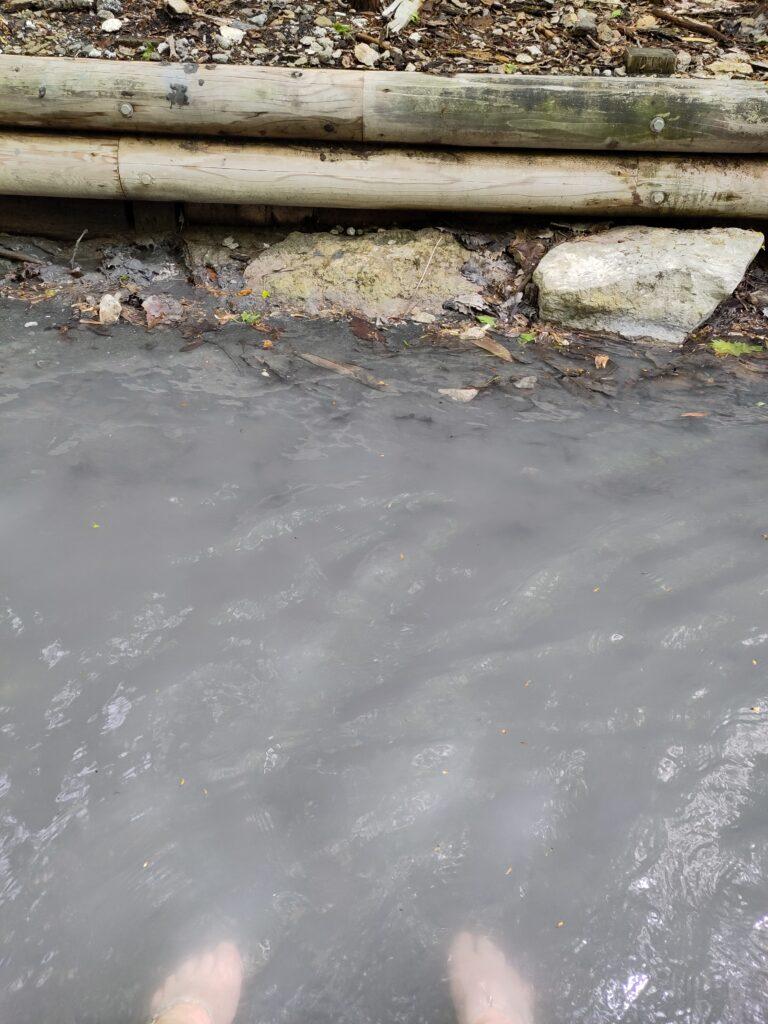

Sapporo and sushi
After a relaxing moment, we had to put our shoes back on and continue the walk to the bus stop, to head back to Sapporo. It took about an hour to get there, so we arrived in the middle of the afternoon. Temperatures were way lower than on the main island, they had dropped to 15°C when we reached the main city of Hokkaido. Sapporo is big but doesn’t feel crowded (maybe a bit at night in the entertainment district).
Around 6.30 PM, we went to a sushi restaurant, in a building one street away from the hotel. There was a queue of Japanese patrons (a good omen, although there were not a lot of foreign tourists in the area anyway). After 15 minutes, we were greeted by the hostess and got a seat.
Sushi are ordered by filling in a paper, and other dishes directly from the waiter. The food was amazing and we kind of ate too much (it was hard to stop), but the bill was not that high: we had 12 pieces and a salmon tartare each, and sake for two (taking into account that we ordered some special sushi, like otoro, crab, scallop…) and paid 63 €*.
🔖Sushi Shikihanamaru Tokeidai
After this satisfying and filling meal, we took a stroll in Odori park before going back to the hotel.
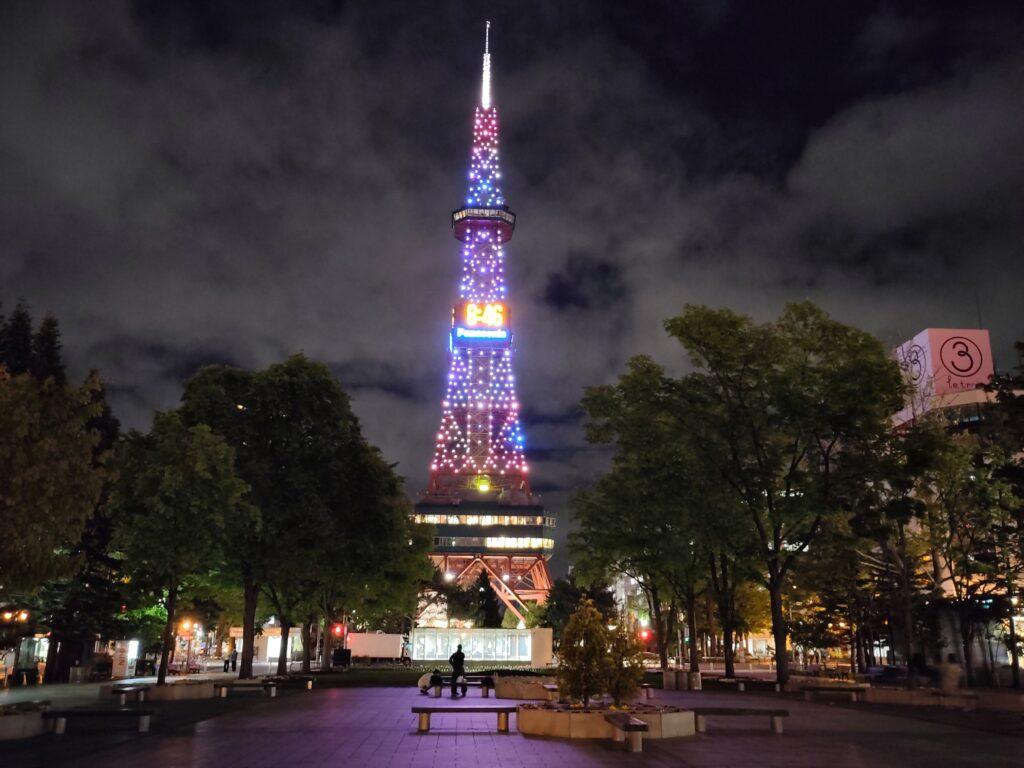
Day 2
Hokkaido historic village
We grabbed a breakfast to-go and took the train to visit the Hokkaido historic village (15 minutes of train then 20 minutes walking).
It’s a reconstruction of a typical village from the region in the late 1800s/early 1900s. The person at the ticket office was happy that we came from Belgium to visit the place. In the park, there are Japanese volunteer guides who provide explanations. Several of them made an effort to explain things to us in English, sometimes using gestures more than words. We met a volunteer who spoke a very good English and chatted with us to find out about our travel itinerary, where we came from, what we do for a living, and so on.
Continuing our tour of the village, we passed an elderly gentleman who was struggling to open the cap of a bottle he bought from the vending machine. Thibault asked him (using sign language) if he would like some help opening it. He accepted, and a few seconds later ran after us to give us some candy because he was so grateful for our gesture.
Later, a group of four crazy grandmas (we met quite a few during our trip to Japan 😂) visiting the park were taking group selfies. We hid so we wouldn’t appear in the background of their photo. They thanked us profusely for this small gesture and couldn’t stop laughing.
All these interactions will remain in our memories for a long time. I think back on them with a lot of emotion. I didn’t particularly expect to have so many human interactions in this region, rather than in the big cities, but the language barrier never happened to be an issue and we felt really welcome.
Inside the historic park, there’s a canteen with a few classics, like ramen and curry.
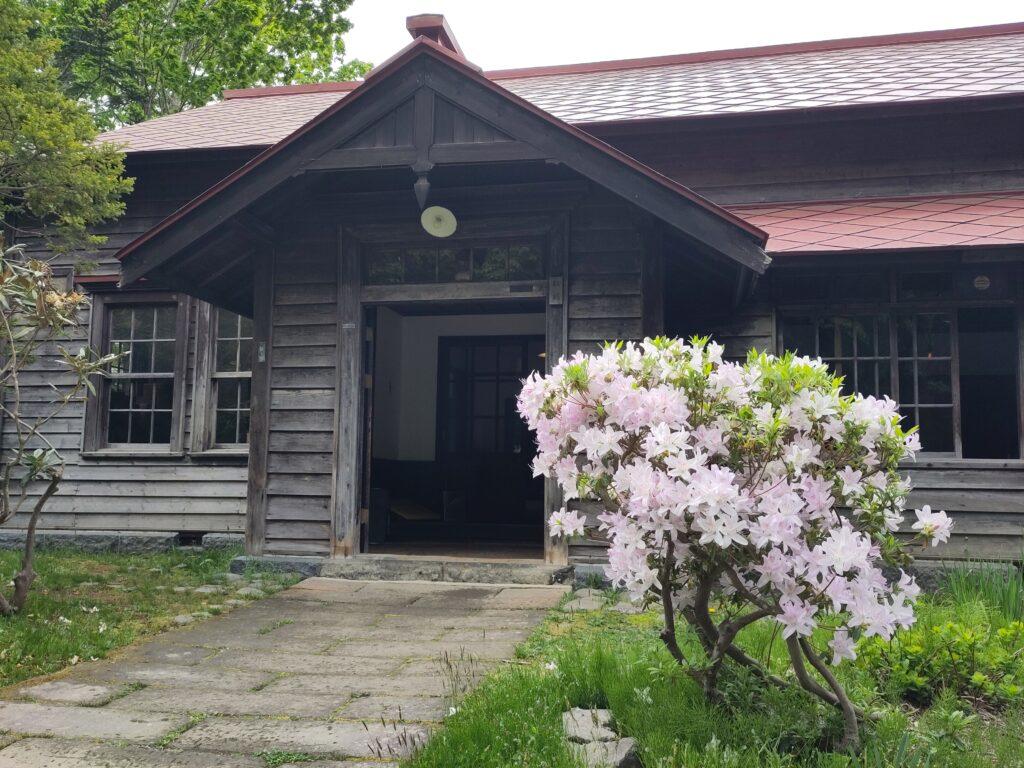
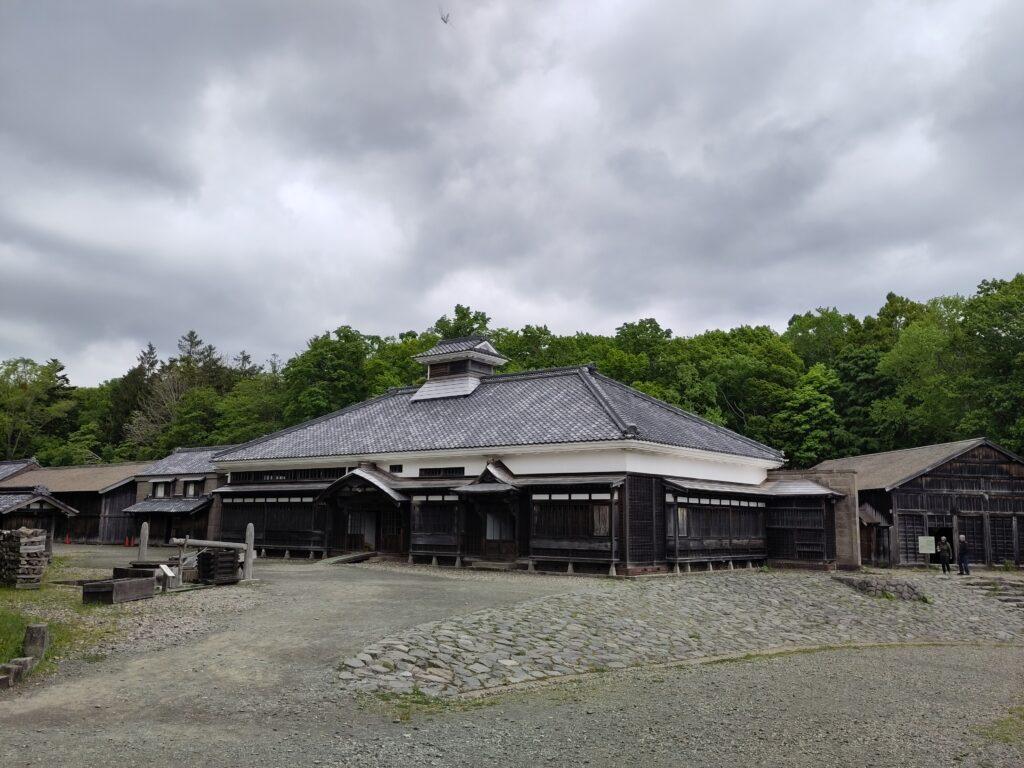
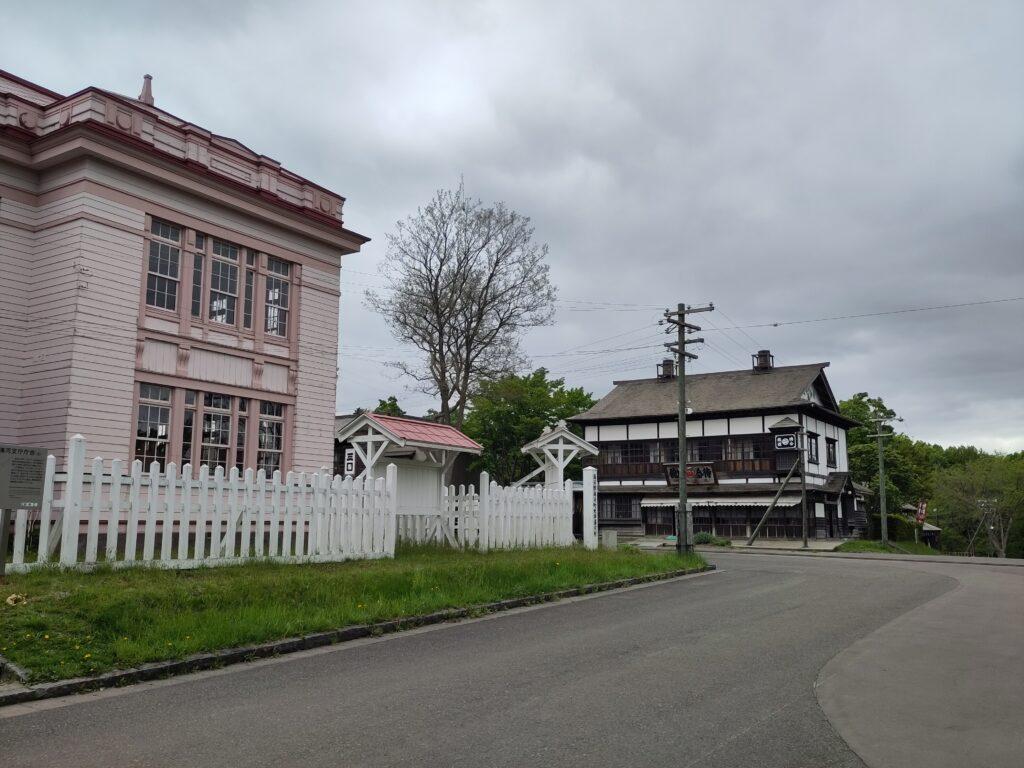
Sapporo, beer museum and ramen street
Back to Sapporo, we suddenly realized that the Sapporo** Beer Museum (**the beer brand, not the city) is closing earlier that what we had in mind. From Sapporo station, it was a 25-minute walk, so we got there around 3.30 PM. The museum is free, but in the end it wasn’t really interesting, and we couldn’t participe in the tastings, which stopped at 4 PM. The surrounding Beer gardens are restaurants, there is no place offering beer tastings, so we were a bit disappointed.
After the museum, we went to Odori park by day (after seeing it by night the day before), then to Susukino ramen street. We thought going there a bit before diner time would save us from queues, but many ramen shops were already at full capacity and queues already formed on the outside. We gave up on our first choice and decided to go for a shop with seating available, and the ramen was perfectly fine.
In the city center of Sapporo, there are a lot of entertainment places, like karaoke bars and so on, but after strolling a bit, we didn’t feel like going any place and went back to the hotel.
Day 3
Yoichi and Nikka distillery
On day 3, we grabbed a sandwich and coffee at Doutor (the Japanese Starbucks, if I may say so) and took the train heading for Otaru. At Otaru station, we left our first train and boarded the one just in front to continue to Yoichi.
The small station of Yoichi is proudly decorated with items reminding visitors that the Nikka distillery is a few steps away. We already visited the Nikka distillery in Miyagikyo, near Sendai, so this time we didn’t book a tour. However, the distillery in Yoichi has an interesting museum, for whisky enthusiasts, about the founder of Nikka, his training in Scotland and how he made whisky popular in Japan.
There’s also a tasting space, and a shop where you can find local exclusive bottles or goods.
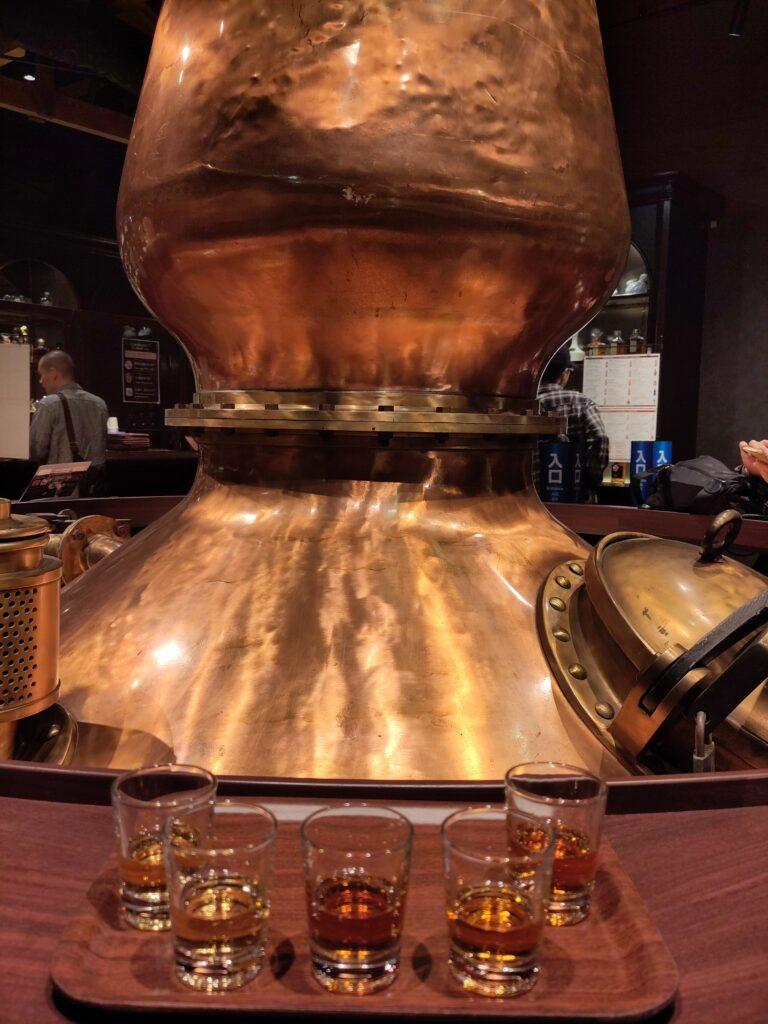
Back to Yoichi station, we had to wait another 30 minutes for the train back to Otaru, so we tasted some local wine at the shop in the station (this is the only time during our trip we had the opportunity to taste Japanese wine). Wines are displayed in dispensing machines, and coins for white wine were 300 yens, and 500 yens for red wine (that is about 1,85 €* and 3 €*).
The wine was not to our taste, too light-bodied compared to what we usually drink.
Otaru
Otaru is probably the most famous destination on Hokkaido, thanks to it canal which makes for a beautiful picture background. Straight our of Otaru station, we got a nice view of the main road going down, with the sea on the horizon.
Touring the main attraction, the canal, doesn’t take long at all, and there isn’t much to see apart from it. We ate a bao bun then got a really nice table at the beer hall, along the canal (there are worse places to have a beer!). It was sunny but a bit chilly.
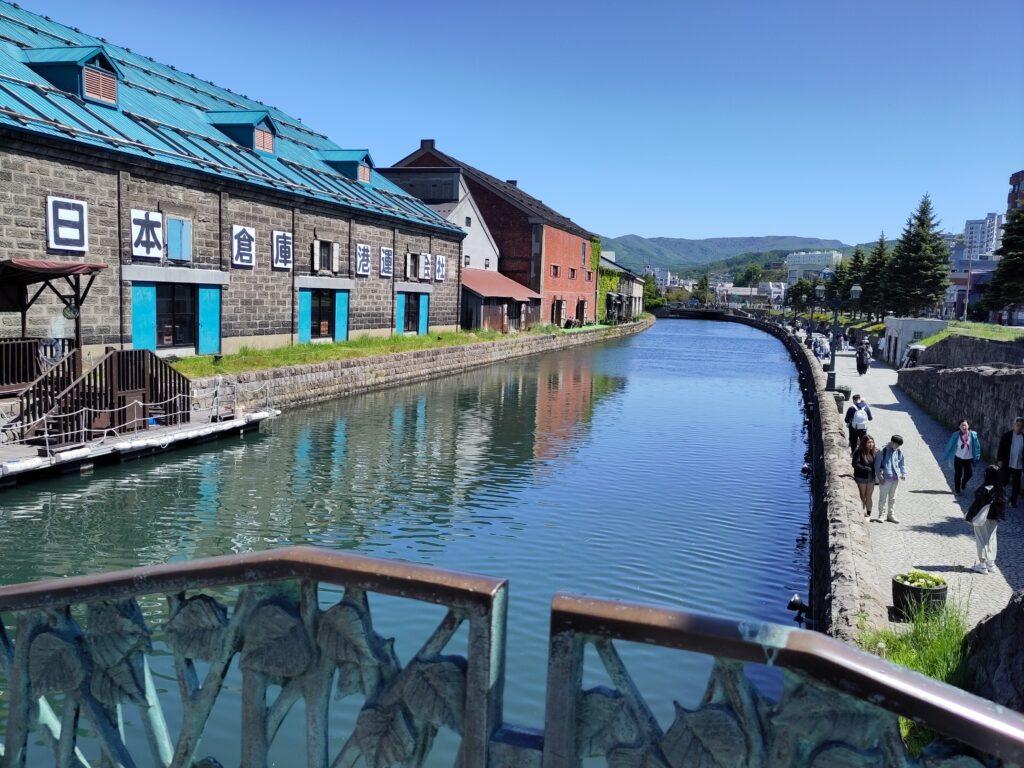
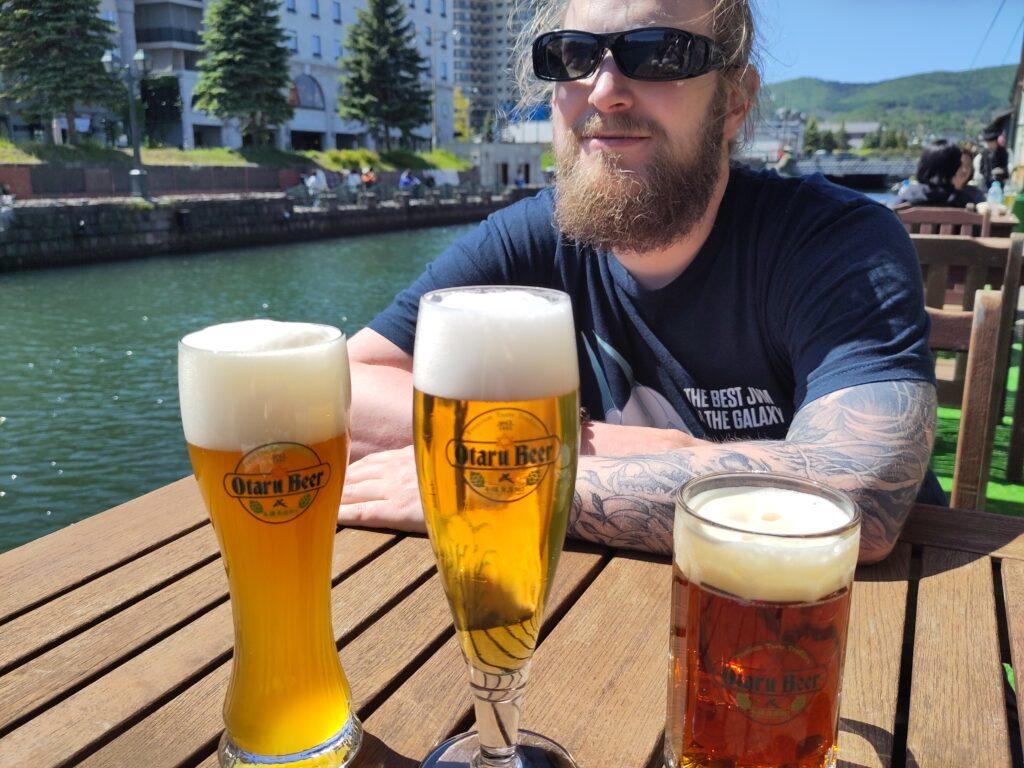
That was about what there was to see or do in Otaru for us, so we headed back to Sapporo for some organisation and packing.
Day 4
Toya 💚
For our last day on Hokkaido, we rode the train down to Hakodate with a stop in Toya. We left our luggage in a coin locker and took the bus in front of the station. After a few stops, we got off the bus and took a walk up to lake Toya.
It was hot and sunny that day, and the walk started with a steep upwards slope. Thankfully, the rest of the walk was flatter and protected by trees. Our first stop on this walk was a volcano crater, naturally turned into a small lake. From there, we got an amazing view on lake Toya and a pretty high mountain in the background (although it’s “only” 1/3 of the height of Fuji).
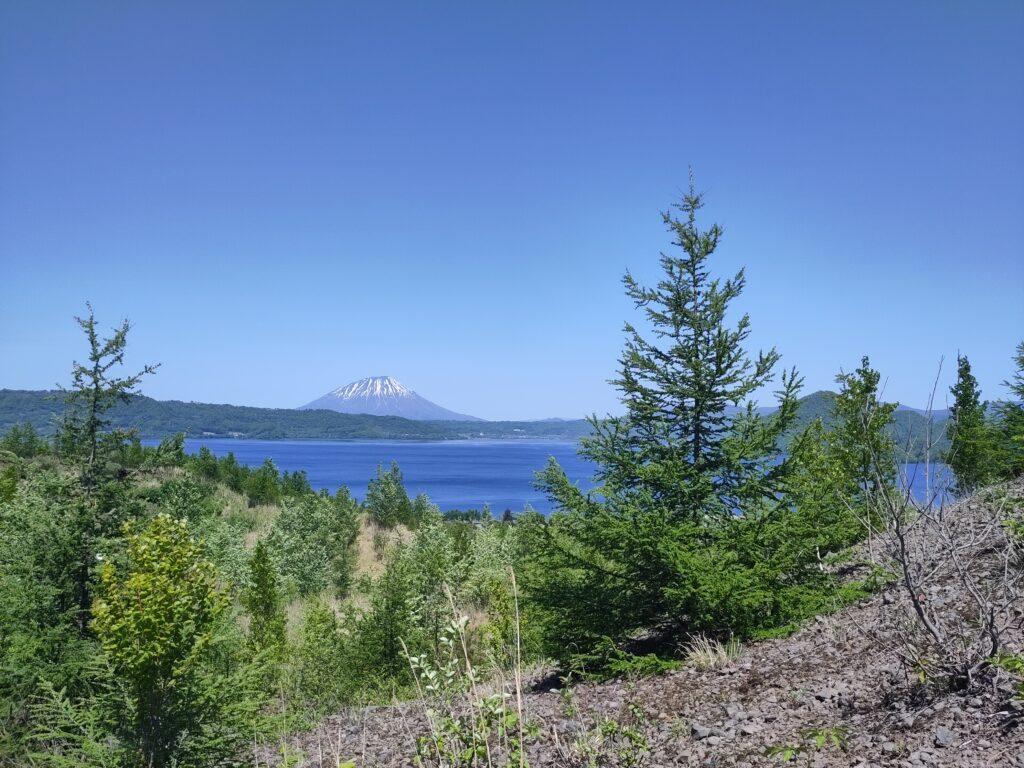
Next, we encountered an abandoned village, result of an eruption in 2000, then continued further down to the lake. And this is were we met a few cherry blossoms. Not as impressive as hanami but it still made us really happy.
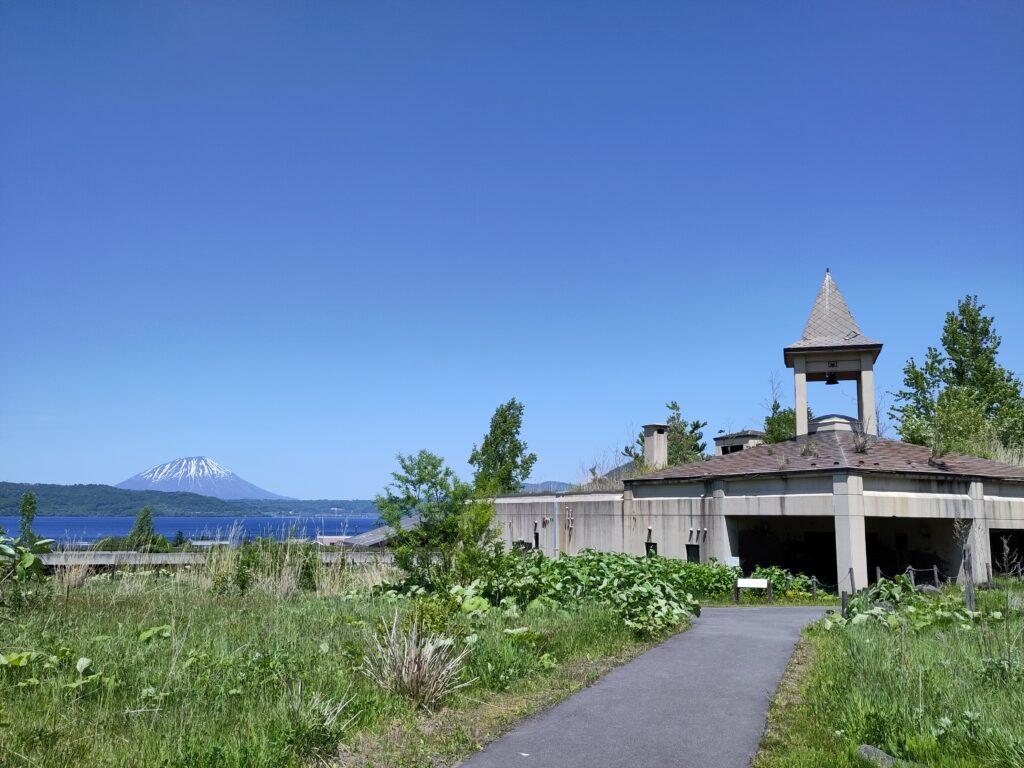
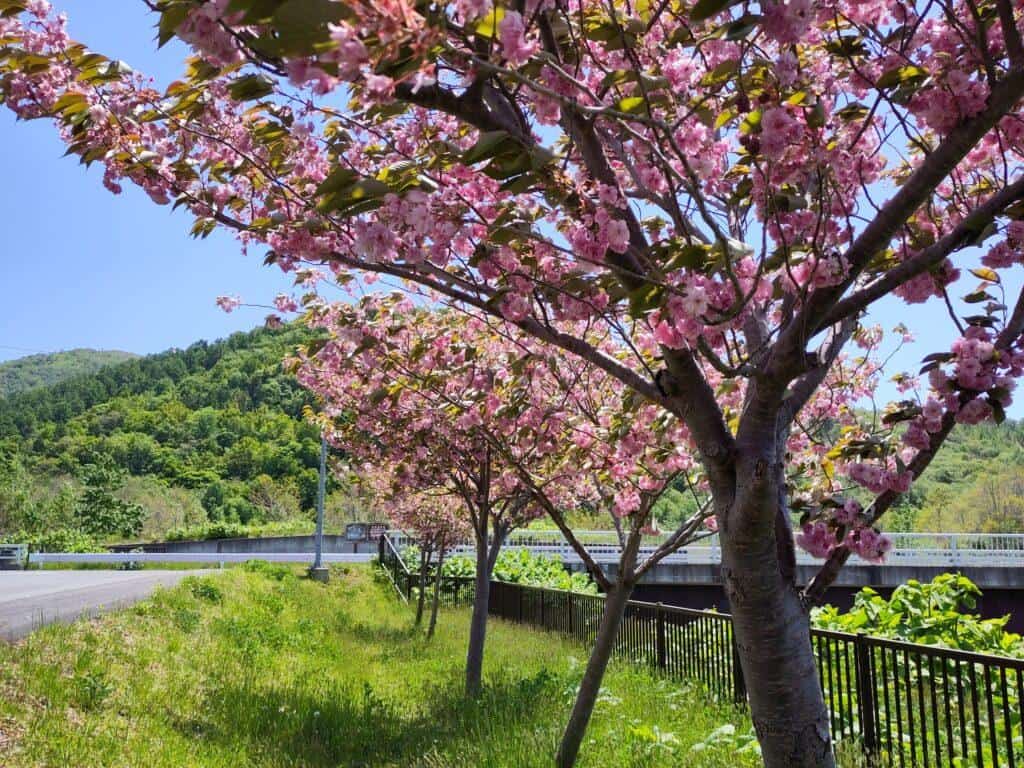
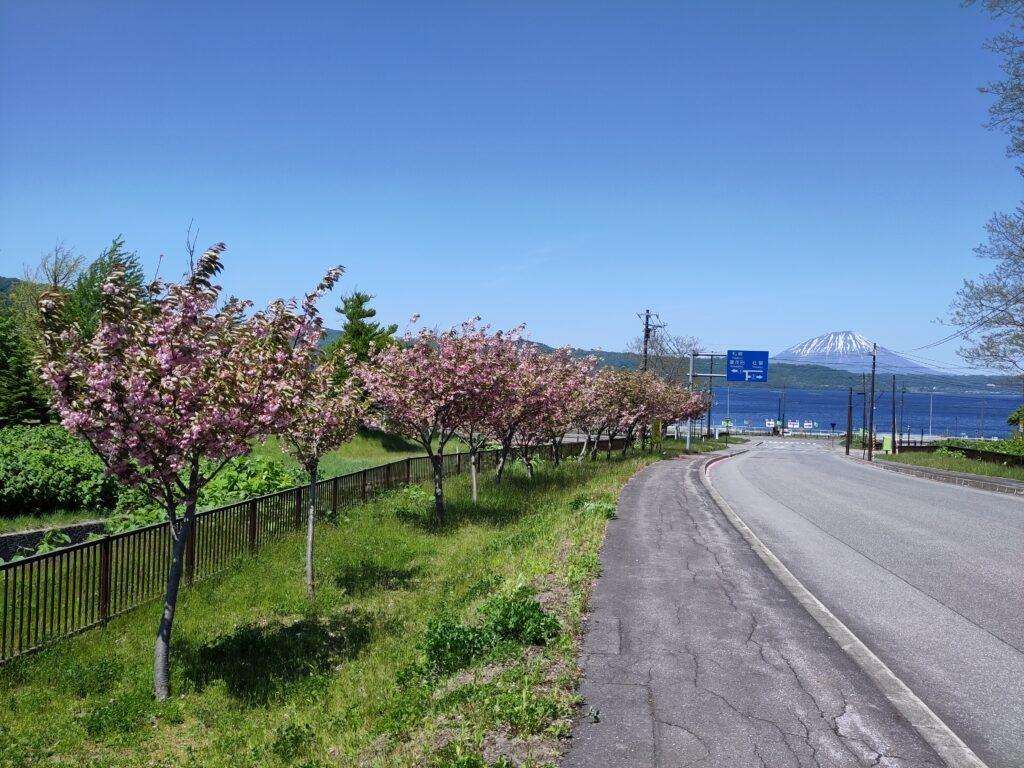
We finally arrived at the lake and found the foot bath with a view on said lake. Water is naturally heated by the area geothermic activity.
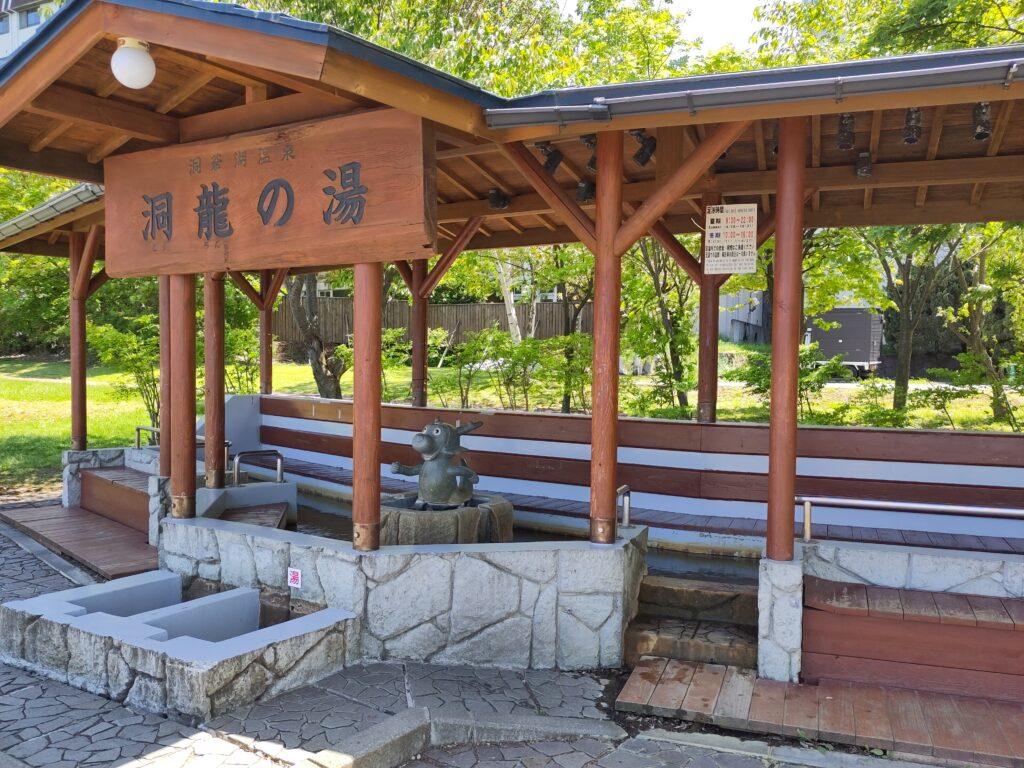
After this relaxing break, we looked for a place to eat and ended up at a “soup curry” restaurant. We had to wait a bit before receiving our food, but it was worth waiting, it was delicious, full of fresh ingredients, and that’s also the only time during our trip we could eat curry in a soup, instead of the classic Japanese curry.
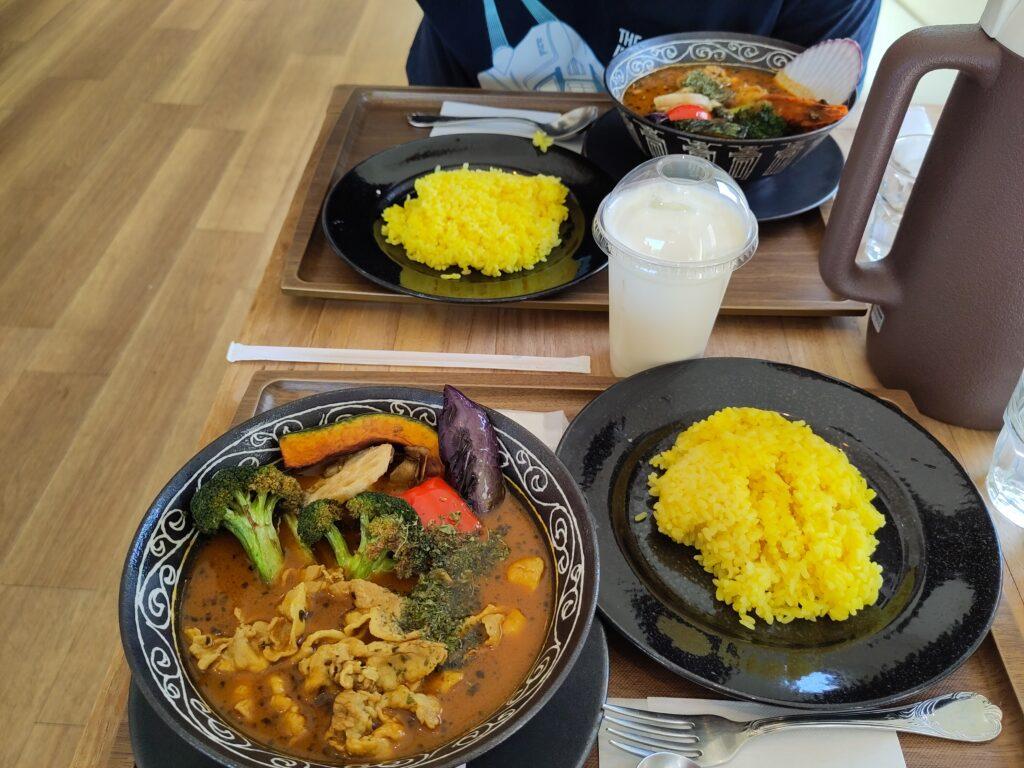
Back to the lake, we enjoyed the foot bath once more. We hesitated a bit about staying a few more hours in the area, but we decided to stick to the original plan. This is surely a destination we would go back to if we had the opportunity, and we would stay longer there.
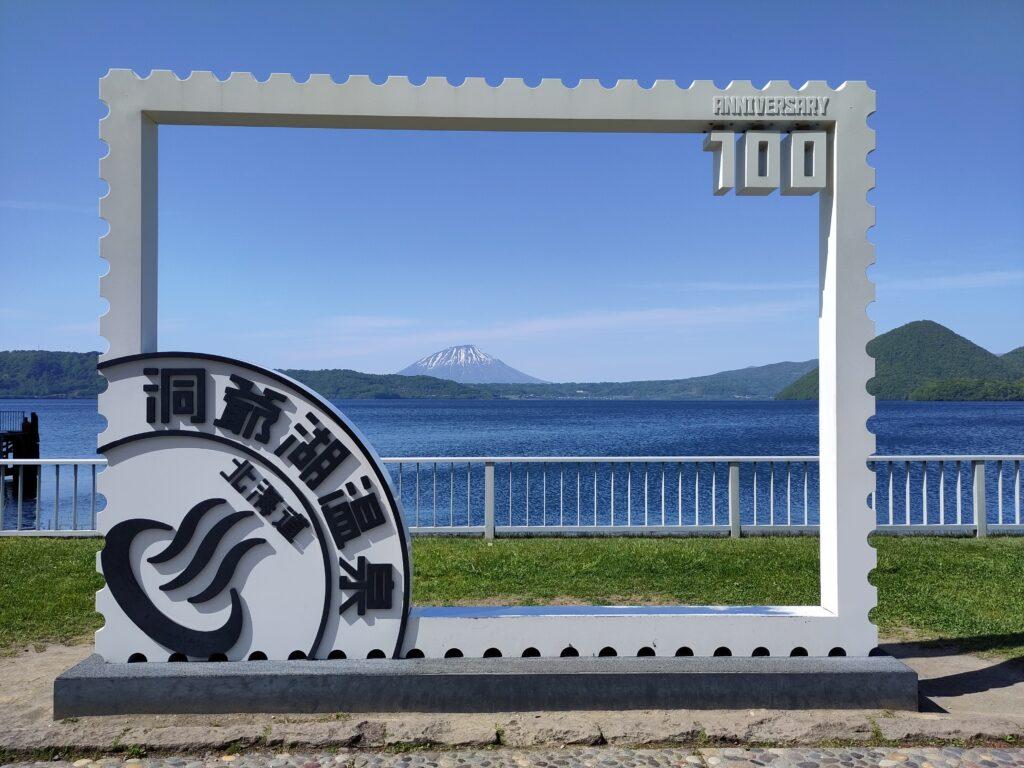
After the bus ride, we were back at Toya station, but since the train was coming in 30 minutes, we walked to the sea front, a few streets away from the station.
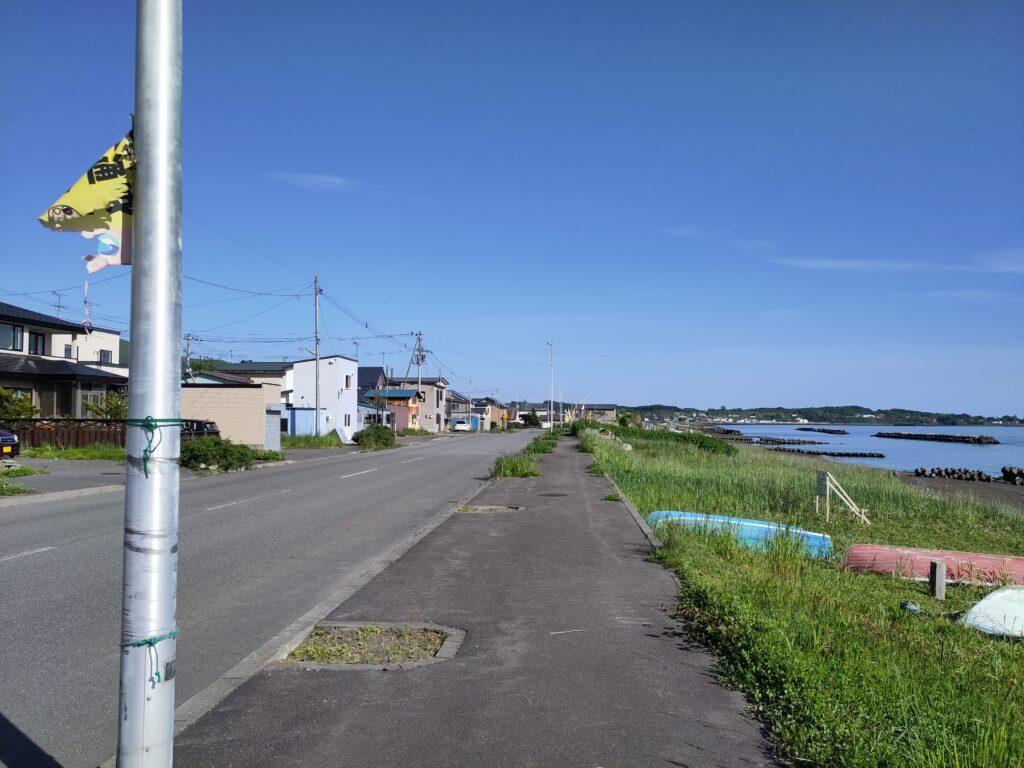
Shin-Hakodate
From Toya, we took the train to Shin-Hakodate, the Shinkansen station of Hakodate (which is not directly accessible from the city center but requires to take a local train). We decided to sleep next to the Shinkansen station to save some time for the day after.
We bought food for diner and a breakfast for the day after at a konbini (there is nothing else in the area anyway).
Hokkaido: afterthoughts
There were a few places that were not as impressive as expected (like Otaru or Jigokudani), but we still would like to go back to Hokkaido in the future. We would probably change a few things, like not relying too much on touristy spots, and maybe renting a car so we can visit natural parks and hike.
The island is currently not as well serviced by public transportation as other parts of Japan (although it could change with the new Shinkansen line in 2030), so we often felt limited during the organisation of this trip.
Fair to say, if we knew public transportation was so reliable, we would maybe have planned our trip differently (for example, not being scared of taking a bus that passes by two times a day, or making plans involving multiple connections).
National parks will probably never be serviced by public transportation (or in a very limited way), so driving seems like a safe option to go off the beaten path.
And if we go back to Hokkaido, we will definitely give Toya a bit more time.
Next stop of our one-month trip: Nikko
*Prices mentioned in the article are based on the ones that were applicable during our stay as well as the exchange rate at that time (May-June 2023)
